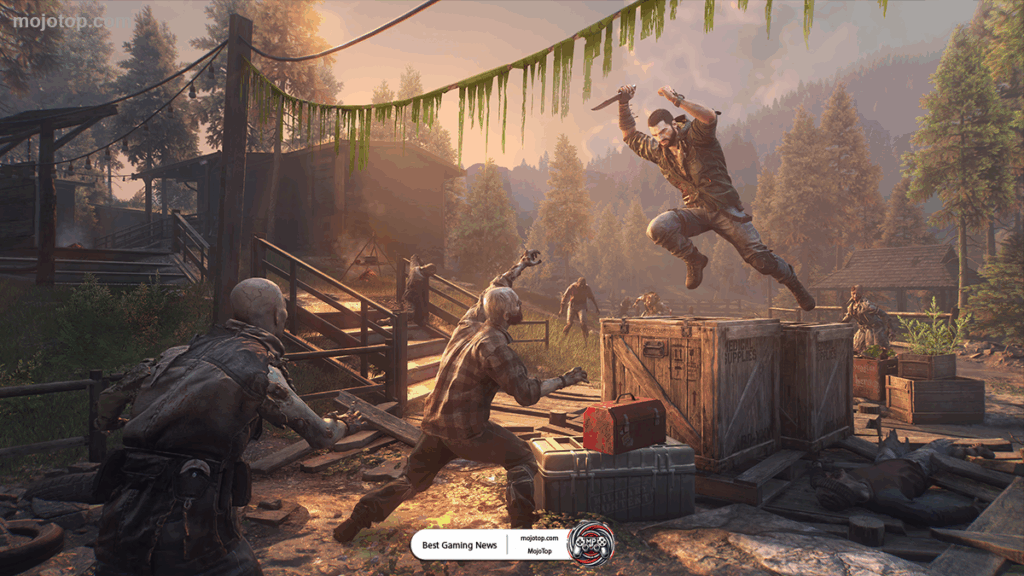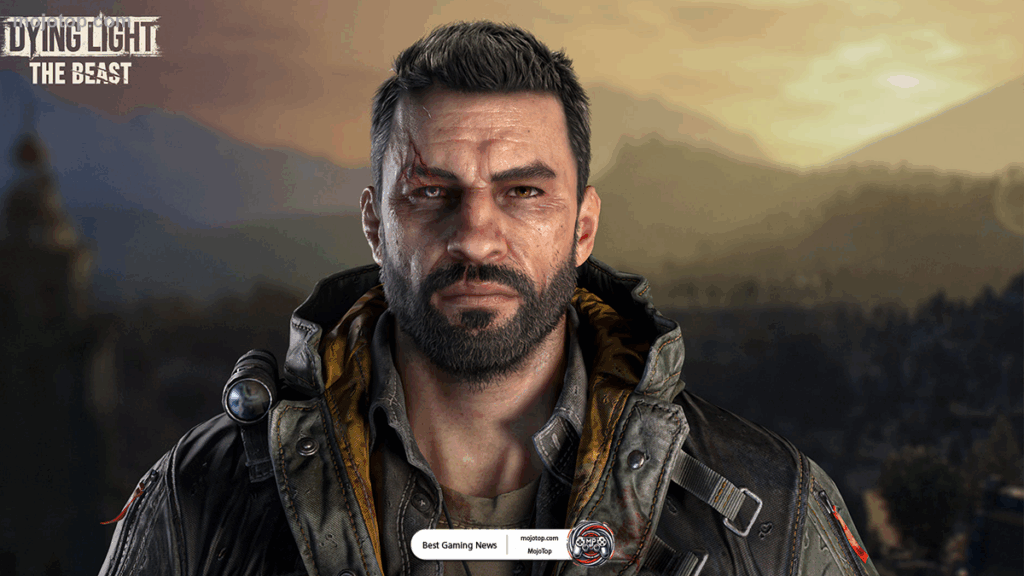Dying Light The Beast: 5 Reasons It’s a Must Play
Explore the latest dying light the beast news and uncover why this expansion delivers intense action, fresh gameplay, and a new survival experience.
Recent dying light the beast news reveals a number of key developments and changes that make this expansion (now a standalone title) one of the most anticipated in the franchise. First, the release date has been confirmed for September 18, 2025 on PC, PlayStation 5 / PS5 Pro, and Xbox Series X|S. For PlayStation 4 and Xbox One, versions are planned for later in 2025.
One of the biggest shifts in the game’s development: what started as a DLC for Dying Light 2: Stay Human was expanded into a full standalone survival-horror experience. The developer, Techland, has emphasized that the scope is much more ambitious than originally planned, with stronger narrative focus, enhanced visuals, and more polished mechanics.
Gameplay upgrades are also prominent in recent dying light the beast news. Players will return as Kyle Crane, now dealing with the consequences of captivity and experimentation, which unlocks a new “Beast Mode” that lets him unleash more powerful, primal abilities against zombies. The game will feature both melee and firearms combat with scarcity in resources, weapon durability, and a greater focus on survival under threat, especially during night cycles when enemies become much more dangerous.
Additionally, the environments expand into new terrains. The setting Castor Woods (sometimes “Castor Rocks” in reporting) provides dense woods, swamps, and a more natural, rural backdrop compared to previous urban zones. Day-night contrast is stronger, amplifying tension when darkness falls. Also, vehicles return as a traversal option, bringing fresh dynamics to exploring the open world.
Finally, Techland has made clear its commitment to polish. According to the latest dying light the beast news, delays were implemented to ensure physics, UI, animations, and overall quality are refined. There are also pre-order incentives like the “Hero of Harran Bundle,” plus promises of exclusive rewards for early purchasers.
For a full overview of the most exciting upcoming games and their features, make sure to check out our detailed article on future releases.
A Darker and More Intense Storyline
In the newest dying light the beast news, the storyline stands out as heavier, more personal, and emotionally charged than ever before. Dying Light The Beast picks up with Kyle Crane after years of brutal captivity under a character known only as the Baron. He has been subjected to painful experiments, with zombie DNA integrated into his body, leaving him torn between his humanity and something monstrous.
Kyle’s escape from the Baron’s grip is just the beginning. The plot delves into themes of trauma, vengeance, identity, and inner conflict. Crane is driven not only by revenge but also by a desperate need to control the beast within. As he ventures into the wilds of Castor Woods, he discovers that physical scars are only part of what he must overcome. His inner beast threatens to consume him if he can’t reconcile his human past with the monstrous changes.
In addition, dying light the beast news highlights a shift in narrative tone: less about grand politics or civilization versus infection, more about Crane’s internal struggle and moral ambiguity. He forms alliances with survivors and resists oppressive forces, but every decision is coloured by how much of the monster he allows to surface. The Baron, meanwhile, looms as both a personal antagonist and a symbol of what Kyle fears becoming.
Another facet making the story darker and more intense is the setting. Castor Woods is described not just as overrun with undead, but as a place that preys on Crane. The sense of isolation, the danger of night, the unpredictable threats, and the knowledge that Crane’s body itself might betray him—all reinforce the dread and tension.
Finally, the scale of the story is more expansive than initially expected. What was once planned as an 18-hour DLC storyline has grown into about 20 hours of main narrative, enriched with 20-30 more hours of side content and exploration. This means players will have more opportunity to witness Crane’s transformation, understand his relationships, and see the consequences of his choices. The lingering tension between redemption and corruption is a thread throughout.
Advanced Parkour and Combat Features in Dying Light The Beast
Techland has pushed both movement and fighting mechanics to new heights in dying light the beast news, giving players a more dynamic, responsive, and visceral experience. Here’s a breakdown of what’s changed and improved in advanced parkour and combat:
In the latest behind-the-scenes updates, Techland emphasizes that Dying Light The Beast will feature parkour that feels grounded and weighty. Players will notice that jump physics are carefully balanced, reducing the floatiness that could break immersion. In default mode there are no parkour assists, meaning success depends on player skill.
Climbing is less restricted by stamina in many cases, but reaching certain tricky spots will require good timing and observation. Kyle Crane has over 100 new animations related to agility, free-running, and traversing terrain. The environment of Castor Woods was designed with this in mind—structures, natural obstacles, and landmarks are placed to encourage creative movement rather than forcing linear paths.
Combat in Dying Light The Beast isn’t just about swinging swords or shooting zombies—Techland has introduced deeper mechanics to make fights feel both brutal and strategic. The hit physics are improved so that enemy reactions are more realistic, with visible wounds, destructible body parts, and more immersive swing-and-stop animations.
Ranged and melee weapons both have greater weight in encounters. Melee now includes savage beast-mode powers that allow Crane to rip, tear, and use his mutated side to brutal effect. Firearms and stealth play also get more nuance: enemies use advanced cover mechanics and different positioning strategies. Humans are more adaptive in combat, forcing players to think tactically.
Nighttime’s danger is significantly upgraded, according to dying light the beast news. Volatiles—those terrifying fast zombies—are more unpredictable and aggressive. They have improved locomotion and run-loop animations, better sensory detection of players, and more jump grabs or surprise attacks.

Different biomes also affect how combat plays out: for example, darker, denser forest areas limit visibility and make stealth tougher, while more open or partially lit areas give more tactical options. Night behaviour varies by location in Castor Woods—Techland cited this as a major goal: making the night feel oppressive and dangerous again.
What stands out in dying light the beast news is how parkour, combat, and survival elements interlock. Movement isn’t just traversal—it’s also a combat tool. Players can fluidly transition from rooftop parkour into melee combat, drop down, evade, or use terrain in their favor. Stamina limits, weapon durability, and the risk of exposure at night force careful choices
Vehicles also appear in combat situations—an off-road vehicle can be used to traverse the map quickly, escape danger, or even plow through groups of enemies.
New Enemies and Beasts to Defeat in dying light the beast
In recent dying light the beast news, Techland has revealed that the expansion introduces a variety of new adversaries—both mutant beasts and upgraded versions of classic undead—that significantly raise the stakes of survival. These enemies are not just more numerous; many of them feature new behaviors, abilities, and variants that demand different tactics and respect, especially during the night or when encountering the more dangerous specimen classes.
One of the biggest changes coming in the night cycles involves Volatiles. According to latest reports, Volatiles now have improved locomotion, more realistic run-loop animations, and altered retreat behaviors so they are more likely to stay and fight rather than flee. They also detect players more reliably, making stealth and vigilance significantly more important. Additionally, they feature new jump grabs and more brutal attack patterns.
A standout among the new beasts are Chimeras. Recent dying light the beast news has spotlighted several Chimera variants, each with distinct combat profiles. For example, “Mist Chimera” is agile and can summon smaller zombies while attacking from a distance, using bile and leap-attacks. Another is Reaper—a brute with huge health, able to take hits and absorb damage while delivering heavy melee assaults. Facing these foes requires combining brute strength (including Beast Mode) with tactical play, using weak-point targeting and environmental awareness.
It’s not just monsters—human enemies in dying light the beast are more dangerous than ever thanks to upgraded AI and advanced cover mechanics. Reports mention that human combatants can use positioning more intelligently, employing cover and flanking, which means brute force alone won’t always solve encounters. Weapons remain scarce in many scenarios, so players must balance stealth, evasion, and precision when facing them.
Several new beasts and enemies also introduce interactive weaknesses. In some cases, elements like weather or terrain amplify danger: fighting in darkness or poor visibility makes detection by Volatiles harder to avoid.Some enemies have weak points on limbs or armor that can be exploited. Targeted attacks against those weak points can either cripple enemy abilities or shorten combat altogether.
Expanded Open World Exploration
One of the most talked-about elements in dying light the beast news is how the open world has been expanded and refined, especially with the introduction of Castor Woods. Instead of returning to an urban wasteland, the game offers a rural valley surrounded by forested hills, swamps, farmland, mountain ranges, and abandoned villages — creating a diverse array of biomes that invites exploration in unexpected places.
Developers at Techland emphasize that the world in Dying Light The Beast is “hand-crafted” rather than procedurally generated. This means each location is designed with intent — cottages, nature paths, ruins, and relics of past human life are placed to foster atmosphere, surprise, and emergent gameplay. Even abandoned shops, gardens, and monuments carry stories; for example, you’ll find traces of a cancelled summer festival in Castor Woods, from rusted decorations to event posters.
Exploration mechanics have also been diversified. In addition to parkouring across rooftops and scaling natural obstacles, Dying Light The Beast includes off-road vehicles to help traverse some of the more remote or rough terrain. However, movement isn’t simply about speed — terrain type, weather, and time of day affect how easy or dangerous traversing certain zones can be. Dense forest, muddy paths, swamps, or nighttime routes all carry risk and reward.
Another feature from the latest dying light the beast news is the inclusion of many hidden objects, collectibles, and environmental storytelling cues. There are over 100 collectibles and plenty of easter eggs spread across the world to encourage players to stray from the beaten path. These details enrich the atmosphere and make every new area worth investigating.
Finally, the size and scale of the map are paired with a robust side-content design. The main story is estimated at around 20 hours, with an additional 20-30 hours of side content, secrets, challenges, and exploration built into the world. That means players who enjoy delving into every corner will have plenty to do beyond the core missions.

Multiplayer Survival Just Got Better
Recent dying light the beast news confirms that multiplayer survival is a core component of the game, refined to deliver a smoother, more cooperative experience. Techland has built Dying Light The Beast to support up to four players in co-op, allowing friends to team up and tackle the dangers of Castor Woods together rather than going solo.
One of the biggest improvements is in shared progression. Every fight, discovery, mission, and twist in the story can be experienced and completed together. Players won’t have to replay missions or lose rewards if someone joins or leaves mid-session. This helps maintain immersion and reduces frustration, especially in survival situations where every resource counts.
Resource scarcity and threat levels scale more dynamically in multiplayer based on how many players are present, according to the latest updates. Enemies in co-op tend to become more aggressive at night, and with more players, some beasts or mutated creatures deliver stronger attacks or coordinate more tactics, which introduces risk and forces teams to communicate and strategize.
Another enhancement from dying light the beast news is the balance of loot, objectives, and skill distribution in co-op. Techland has indicated that weapons, gear, and abilities will remain meaningful in group settings: durability, weapon degradation, and even “Beast Mode” abilities retain weight and trade-offs. Players working together can complement each other’s strengths — e.g. one may focus on stealth or ranged attacks while others take on frontline melee roles — which improves tactical variety.
Finally, multiplayer is not just about combat. Survival elements become more challenging and rewarding with co-op. Exploration, gathering scarce resources, crafting, and navigating environmental hazards become shared responsibilities. Safe zones, workbenches, and shared upgrades play a larger role when cooperating: groups can pool resources or trade loot, helping each other stay alive during especially dangerous night cycles or when confronting powerful beasts.

